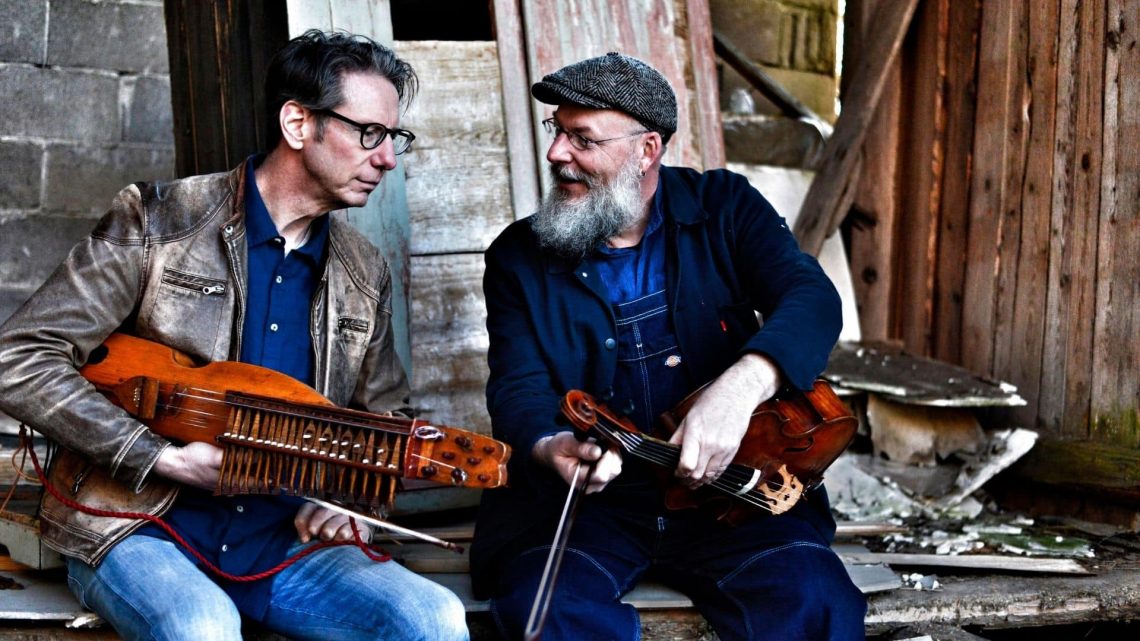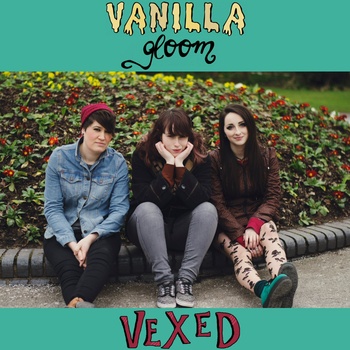This Sunday, 20th October, Swedish folk royalty, Olov Johansson and Mikael Marin, better known as Väsen, will make their much-anticipated return to Belfast as part of this year’s Belfast International Arts Festival. Revered for their captivating blend of new and traditional folk music, Väsen’s one-off show will feature a special suite by composer Chris Corrigan, crafted for nyckelharpa, electric viola and live electronics. It’s set to take place in the unique immersive sound environment of SARC’s Sonic Laboratory, offering a dynamic experience for both long-time fans and newcomers alike.
Ahead of the performance, Brian Coney had the chance to speak with one-half of Väsen, nyckelharpa master Olov Johansson, about the band’s enduring legacy and their ever-evolving sound. With almost 40 years of musical partnership, Johansson and Mikael Marin have created a style marked by deep tradition, yet always open to new influences. Their seamless interplay has won them acclaim for music that is both intensely intricate and joyfully spontaneous.
While Väsen remain rooted in the traditional music of their native Sweden, their curiosity has led to thrilling collaborations, most recently with American group Hawktail. This creative partnership – born from a shared love of Väsen’s music – has recently culminated in an extraordinary collaborative album, Väsen & Hawktail, and a tour that underscores a deep, growing bond between the two groups. For Johansson, this blending of Swedish and international folk traditions with new musical horizons is what continually keeps the band’s sound – and journey – vital.
Presented alongside Moving on Music, go here to buy tickets to Väsen and Chris Corrigan in Belfast
Hi Olov. You’ve just returned from the States, where you toured with Hawktail and Aoife O’Donovan. What was it like to zig-zag the country once more?
It was a really great experience. I think it was the longest tour we’ve ever done in the U.S., and we’ve been touring there for about 35 years now. First, we did some duo work as Väsen, then we teamed up with Hawktail to release our new physical album together. After that, we joined forces with Aoife O’Donovan on the west coast. So, it kind of felt like three tours in one. The changes in dynamics and working with different people were really nice.
You seem especially drawn to how songs evolve from one dynamic to another. Have there been countless times when a familiar song takes on a whole new feeling when played with others?
Definitely. With Hawktail in particular, their energy has really invigorated us as musicians. They’re incredibly skilled and have a deep connection to Väsen’s music. In fact, when they were at college, they started playing Väsen tunes because they thought they were so much fun to play.
That must be immensely rewarding for them, bridging generations within folk music. But I imagine it’s equally rewarding for you and Mikael?
Absolutely. We first met them when they were teenagers, jamming to Väsen tunes. We’ve followed their journey, watching them grow into amazing professional musicians, playing in all kinds of settings. So when we suggested collaborating, they were very positive. It’s been a real pleasure, with so much positive energy.
I saw something you shared from the New York Times, where a review said: “I know approximately nothing about Swedish folk music but happened to see this band perform live earlier this year… the sound feels soothing and uplifting and has become frequent background music when I write.”
Listening to your new album, I understand what the writer means. Joy has always been a key part of your sound, but on tracks like ‘Your Town Polska’ and ‘Hawk Ale,’ it feels particularly inspired. Do you think that joy is coming through even more now?
We started this collaboration very naturally. We swapped some tunes – Hawktail picked some from their repertoire, and we chose a few from ours. Then several of us composed new material. We had three days before the first concert in Minneapolis to work out the arrangements and it was pure musical joy. I think that joy is inherent in the music we create, and it shines through in the recording.
The Swedish polska’s 3/4 rhythm seems to really lend itself to an upbeat, celebratory energy. Do you consciously aim for this celebratory feel when you sit down to compose?
Not consciously, but I do enjoy celebrating life! For this collaboration, I composed a new tune called ‘Hawk Ale,’ and while writing it, I imagined all five of us playing together and thought about what would be fun for them to perform. I think that intention comes through on the record.
Your music has a strong bond with Celtic nations like Scotland and Ireland, from festivals such as Celtic Colours and Celtic Connections. From performing with Aoife O’Donovan, who spent summers in Ireland playing music, to your recent collaborative album The Auld Harp with Scottish harpist Catriona McKay, what do you see as the main connections between your music and Celtic traditions?
Very early on, I noticed a “fiddle belt” in northern Europe, stretching from Finland, Sweden, and Norway to Shetland, Scotland, and Ireland. There are many similarities in how the music has evolved. I remember going to a folk festival on a scholarship when I was younger. I stayed in a hotel with many artists and got to attend all the concerts for free. This was before the internet, so it was the first time I’d heard so many different types of traditional music. I saw a concert with [Irish folk group] Patrick Street, featuring Kevin Burke, Jackie Daly, and Arthur McGlynn, and I was really impressed with how they played, arranged and interacted with the audience. It was one of those moments where I thought, “This is how it should be.”
I recently saw Kevin Burke perform with The Bothy Band after nearly 50 years, and I noticed that sense of humour and light-heartedness on stage. Is this something you’ve always been drawn to?
Yes, I think it’s important. One of the musicians I learned from, Curt Tallroth, was a great storyteller. He always made people feel relaxed and welcome. Early on, I realised I couldn’t do things exactly like him, but he was a role model in finding my own way of connecting with audiences.
You’re about to head to Belfast for this year’s Belfast International Arts Festival, where you’ll perform new and traditional folk music, including a new suite by Chris Corrigan for nyckelharpa, electric viola, and live electronics at the Sonic Arts Research Centre. What can audiences expect?
We’ve played in Belfast a couple of times before, at the Black Box and in a church, and we’re excited to return. We haven’t been to Ireland since the pandemic, so we’re really looking forward to it. We’re especially excited to see what Chris has come up with for his electro-acoustic production. We’ll meet to rehearse beforehand, but we don’t know exactly what to expect yet, which makes it even more exciting.
Speaking of collaborations, you mentioned how working with Hawktail felt like merging into a powerful musical organism. Is that merging with other musicians still a major driving force for you?
Definitely. For me, a big part of the joy in playing music is connecting with other musicians. It’s like drawing two overlapping circles – where they overlap, you find common ground, and the music flows naturally. The parts that don’t overlap are often where exciting new ideas come in. I felt that connection when I first met Catriona McKay. We each brought something the other didn’t expect, which is really satisfying as a musician. That sense of discovery is a key part of why I play.
We have some experience with this pattern in different situations over the years. I find it’s more exciting. Chris explained how SARC works, and it sounds amazing, so we’re both really looking forward to seeing what’s it like in reality. One part of the concert is our own and we’re playing this piece, based on tunes that were composed by Chris. He was here in Sweden a few years ago and we recorded it for him, so it’s all been leading up to this concert happening.
Before I let you go, ahead of your Belfast show, do you have insurance for your nyckelharpa? I’d worry about such a beautiful instrument being in transit!
I do have insurance, but the nyckelharpa I’m playing now is one I built myself, so if it breaks, I’ll just fix it! I started making nyckelharpas during the pandemic, though I first learned how back in the 1990s. I built my first one back then just to learn the craft, and it turned out quite well. I’d always wanted to make more, and when the pandemic put a pause on touring, I picked it up again. Now, I’m working on number nine
Have you ever found wood while on tour that you wanted to take home and use for building?
I have, but traditionally, spruce for instruments comes from the Alps. However, I found out that Swedish spruce is just as good – it’s a bit denser, but still top quality. In fact, the wood I’m using now is from my neighbour’s yard. I saw the logs there and thought, “Wow, that’s top quality,” and here we are.
With support from Coras Trio’s Paddy McKeown, Väsen and Chris Corrigan perform SARC as part of Belfast International Arts Festival on Sunday, 20th October. Go here to buy tickets






